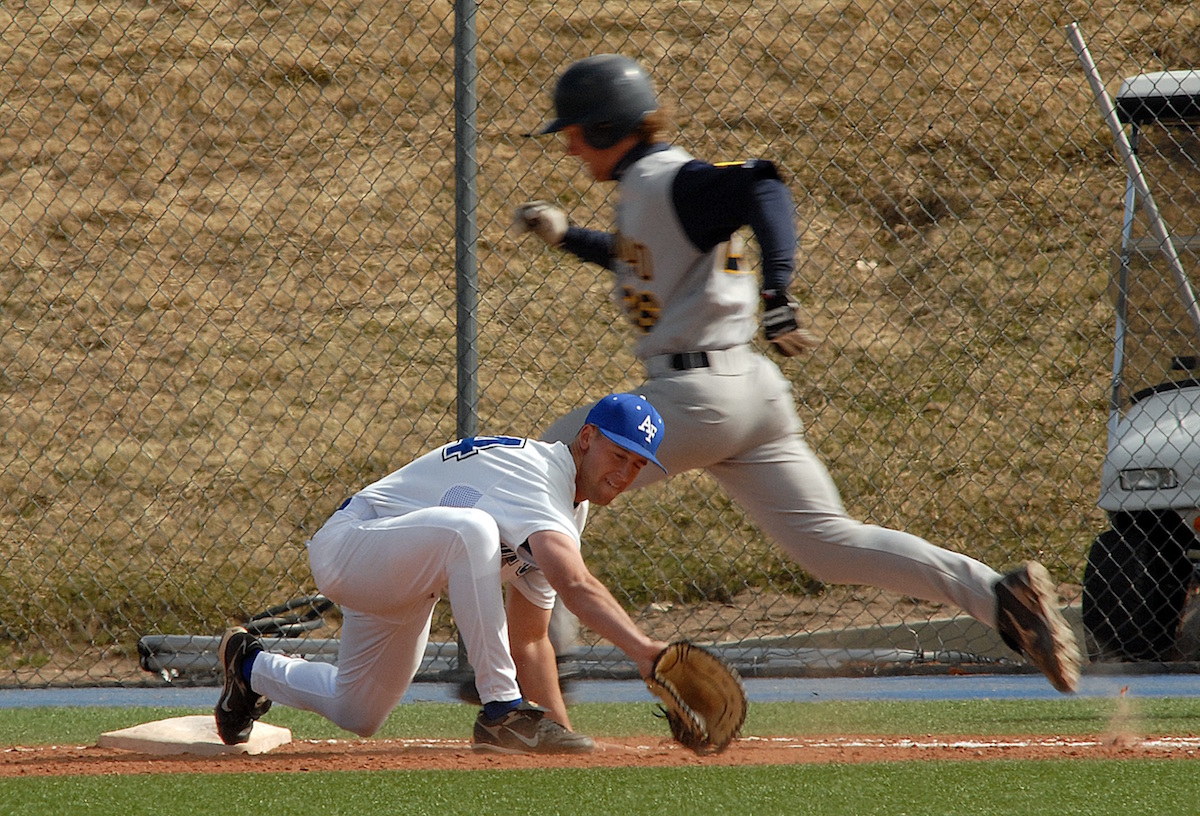I spent the weekend at the Australian Track and Field Coaches Association’s Congress. I was privileged to give three presentations, be part of one panel, and I had the pleasure of going to a lot of informative sessions. There was also one other American speaking at this conference, John Hayes who is a distance coach formerly from the University of Texas.
I began by speaking about how strength and conditioning can assist the track and field events. Basically I went through and did an analysis of each event and discussed where and how strength training could be used to enhance performance.
After that I went to a presentation by a legendary Australian jumps coach named John Boas. Coach Boas’ presentation went in a direction that I didn’t expect but he had some real gems about teamwork, group cohesion, and how to survive the athletics system. Some of his quotes include: “Athletes who threaten the cohesion of the group (no matter their talent level) have to go.” And “Play the bureaucratic game.”
Suzie Fulop, a former Hungarian athlete, did a presentation on the long jump and triple jump. I took a lot of information home from this. Clearly she has an Eastern European coaching approach to the jumps:
• She had suggestions about the length of the run-up for young athletes – basically some of them aren’t fit enough to maintain their speed, this requires the coach to shorten the length of the run-up. A good guidelines is that the athlete’s age equals the number of steps in the run-up.
• For younger athletes, she recommended a lot of 1, 2, and 3-step take-offs. She pointed out that these kinds of take offs were slower, not as much pounding on the athlete, which meant that lots of repetitions were possible with this approach. She also has young athletes practice using both legs as their levering legs.
• Interesting modifications of the straight leg bounds and the high knee drills to really focus on strengthening the hamstrings. Clearly these would be good warm-up drills, but I’m going to use these two.
• Finally (and I heard this often in this Congress), athletes need to own their training and development.
On the second day I did a presentation looking at the different “tools” that are used in strength and conditioning. I discussed how and why these are used, what their advantages are, and their disadvantages. I covered the Olympic lifts, the powerlifts, bodybuilding-type training, kettlebells, heavy ropes, and suspension training. At the end I discussed program design, which was another common theme to each of my presentations.
Legendary swimming coach Bill Sweetenham gave an excellent presentation about coaching, athletes, and teamwork. He said that he doesn’t like the term “personal best” because it implies that the athlete is done. He likes “previous best” because that implies that the athlete’s journey is still continuing. He felt that athletes must have unconditional trust in the coach, but the coach must have unconditional belief in the athlete. When discussing the Olympics, he states that everyone has skill – preparation plus skill is what wins the Olympic. Finally, he stated that it is extremely important to look outside your discipline.
Ken Harradine, an elite discus coach, discussed his experience with the German system of discus coach’s education. What I like about this presentation is that he uses a standard testing battery for all his athletes and updates this every few weeks.
I attended two presentations by Peter Lawler. I know Peter through Modern Athlete and Coach. He has coached everything and is extremely well read and knowledgeable about track and field as well as strength training. He also has an unusual take on things. He had some interesting suggestions on how to use strength training for track and field athletes, unconventional to say the least, which I’m not ready to accept but I do think they’d make excellent warm-up exercises.
I attended a sprint roundtable that was very focused around sprinting drills. After the presentation, at that night’s dinner, I grilled one of the presenters for most of the dinner about this. I’m always uncomfortable when we are so focused on drills. In this presentation, they had filmed drills and were asking when the coaches would review the tape of the drills and correct the athlete. My point at dinner is why not focus on sprinting, which is why the athlete is there, rather than on drills that don’t mimic the motion?
On the last day, I was part of a sprinting roundtable. I got a lot of questions about strength training, but I also had a chance to discuss things like shin splint prevention, ankling strengthening, preventing non-contact ACL injuries, as well as discussing how to prevent hamstring strains via training.
Finally, I did my last presentation. My last presentation was about tools we can use to enhance the horizontal application of force, which is something that strength training does not do well. As part of that, I covered coaching cues for a number of strength training exercises like the Olympic lifts, squats, and deadlifts. I also did a pretty extensive program design talk at the end.
I had a great time at the Coaching Congress and I’ve taken away several things which I’m going to incorporate into what I do. I really want to thank the Australian Track and Field Coaches Association for having me over and for taking such good care of me while I was there.




1 thought on “AT&FCA 2013 Coaching Congress Report”
John
Congratulations, job well done!
Comments are closed.